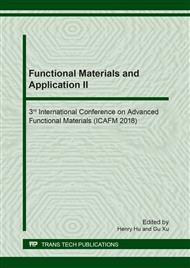p.3
p.9
p.17
p.23
p.29
p.35
p.41
p.47
A Study on the Prediction and Comparison of Processing Using the Artificial Neural Network in Nitinol Electrochemical Machining
Abstract:
Nitinol consists of nickel and titanium. Nitinol is one of the shape memory alloys, which changes the crystal structure at a certain temperature and is restored to a memorized form. Because of these unique features, it is used in medical devices, high precision sensors, and aerospace industries. However, Nitinol is a traditional method of processing, resulting in thermal deformation and residual stress after processing. Therefore, the electrochemical machining (ECM), which does not produce residual stress and thermal deformation, has emerged as an alternative processing technique. This study used artificial neural network (ANN), which are the basis of AI, to replace conventional design of experiments (DOE). This method was shown to be more useful than conventional method of design of experiments (RSM, Taguchi) by applying artificial neural network to electrochamical machining (ECM) and comparing root mean square errors (RMSE).
Info:
Periodical:
Pages:
23-28
Citation:
Online since:
January 2019
Authors:
Price:
Сopyright:
© 2019 Trans Tech Publications Ltd. All Rights Reserved
Share:
Citation:


